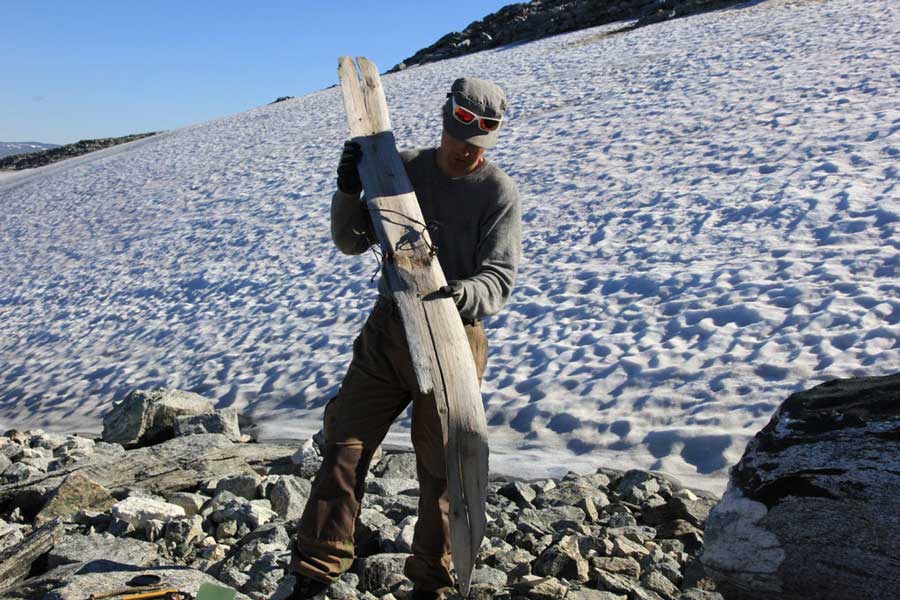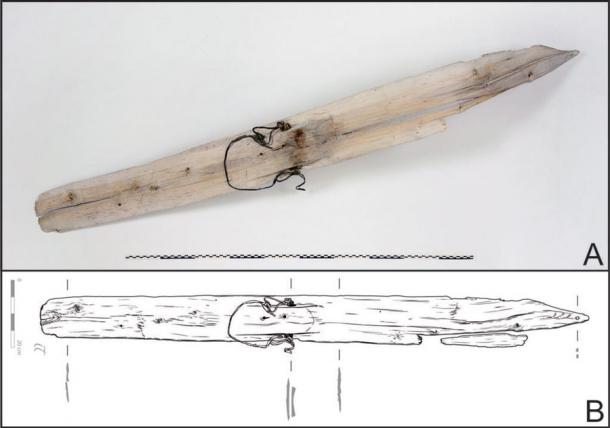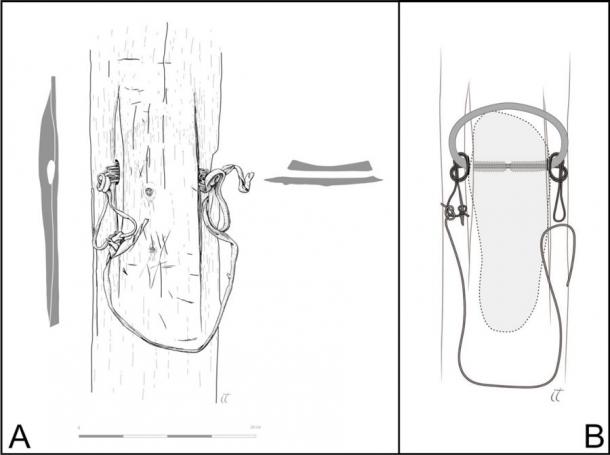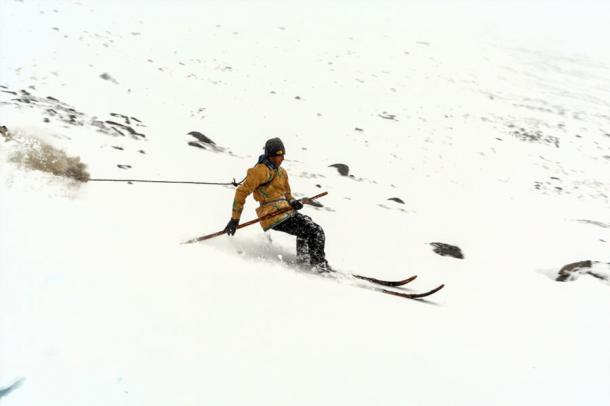
After several years on the hunt, a team in Norway has found another prehistoric ski on Mount Digervarden last month. Whilst not the oldest ski ever found, it is still prehistoric and certainly the best-preserved of its kind. What makes the find even more exciting is the prehistoric ski is one of a pair. The first half of the pair of ancient skis was discovered near the same spot in 2014! Other super-old ski pairs have been found elsewhere but none in such a high state of preservation.
Prehistoric Skis and Other Artifacts Emerge From Shrinking Glaciers
One positive fallout of climate change-induced glacial melt has been that the snow and ice are divulging their secrets. Furthermore, acting as a deep freeze, most of the artifacts are very well-preserved. The multitude of artifacts that has emerged from the snow in recent years from North America, Scandinavia, Siberia, and China are helping researchers to piece together some hitherto unknown aspects of human history.

The Digervarden prehistoric ski. Photo: Vegard Vike, Museum of Cultural History, University of Oslo. Drawing: Ingvild Tinglum Bøckman. (secretsoftheice.com)
This climate-change trend has even created a new academic discipline called glacial archaeology. Although, as Professor Brit Solli, an archaeologist at Oslo University, Norway explained to The Guardian, this is somewhat of a misnomer. “Most of the finds emerging from melting ice caused by climate change are not from moving glaciers, which tend to crush and destroy objects, but from large ice patches, which ebb and flow.”
In Norway, which currently holds more than half the glacial artifacts found in the world thus far, the ice melt has spawned the Glacier Archaeology Program, which is a cooperation between the Innlandet County Council and the Museum of Cultural History, University of Oslo. It began in 2011 and has so far yielded 3000 finds ranging from hunting tools, Viking swords, and transport equipment to clothing, leather and animal bones. Their efforts have been archived online on an amazing website called Secrets of the Ice.
It was a team from the program that found the first prehistoric ski way back in 2014, and then, after a patient wait for the ice to recede, the second ski of the pair was found last month.

The Digervarden prehistoric ski bindings. (Ingvild Tinglum Bøckman / secretsoftheice.com)
A Pair Of Ancient Skis Reunited After 1300 years!
The Secrets of the Ice webpage shares the fascinating story of the reunion. After finding the first ski in 2014, which was dated to 750 AD and in a good state of preservation, the team hoped to find its mate. They continued to monitor the ice patch and went back in 2016 only to find that the ice hadn’t receded much.
Satellite images this year showed that the ice had gone back a good distance, which encouraged two archaeologists to go out last month to do a field survey. They were thrilled to find the second ski at a spot just 5 meters (16.4 feet) away from where the first was found. But lacking the equipment to free it from the ice safely, they had to leave it there and return later.
A fresh round of snowfall kept the archaeologists chomping at the bit and hoping that the snow wouldn’t bury the ski beyond reach. But six days later, a larger team well equipped with pickaxes, gas cookers and packing material negotiated its way back up to where the ski was and were able to find the ski by combining photos taken on the previous visit with GPS.
Then the team began the arduous and careful process of freeing the prehistoric ski with snow shovels, pickaxes, and warm water. The team was lucky: the ski was in a very good state of preservation and even its foot binding was largely intact!

Replica pair of the Digervarden skis. Reconstruction by Kjell Bengtsen. (Espen Finstad / secretsoftheice.com)
The World’s Best-preserved Prehistoric Ski
The second prehistoric ski, a wooden plank, is of the same type as the first, with a raised foothold and bindings for the feet. The ski is 187 centimeters (73.62 inches) long and 17 centimeters (6.69 inches) wide. The second ski is 17 centimeters (6.69 inches) longer and 2 centimeters (0.79 inches) wider than the first ski. It is also in a better state of preservation, perhaps because it was buried 4-5 meters (13.1-16.4 feet) deeper in the snow. This might also be the reason it is longer and wider than the first ski.
The new ski has three twisted birch bindings, a leather strap, and a wooden plug through the hole in the foothold. The ski found in 2014 only had one twisted birch binding and a leather strap through the hole. Both skis have a hole through the front of the curve tip.
Another difference between the two skis is that the new ski has a pointed back end while the older one has a straight one. Interestingly, the new ski shows signs of repair and was well used. It has a bit of its back part missing.
Archaeologist Lars Holger Pilø, who was part of the excavation has written in a blog post on the find on Secrets of the Ice:
“The skis are not identical, but we should not expect them to be. The skis are handmade, not mass-produced. They have a long and individual history of wear and repair before an Iron Age skier used them together and they ended up in the ice 1300 years ago.”

Ma Liqin, traditional skier from Chinese Altai, showing the technique of using a single pole during downhill skiing. (Espen Finstad / secretsoftheice.com)
Some Answers and More Unanswered Questions
One interesting question that a preliminary examination of the new ski seems to answer is whether the skis had a fur lining on the underside to give better grip while ascending and decreased acceleration while descending.
An examination of the first ski wasn’t able to answer this question satisfactorily but the second being better preserved, showed a furrow along its length on its underside. Such a furrow wouldn’t have been there had it been lined with fur. So most likely, the skis didn’t have a fur lining.
While the question of fur has been settled, lots of questions that the ski has raised can only be answered speculatively at this point. Who did the skis belong to? A traveler, a hunter, or both. Why were they abandoned? Was it because they broke, or was there an accident? Did an avalanche occur? Did the person on the skies die in the avalanche? Only a more detailed examination of the skis and further exploration of the spot where they were found can provide some answers to these important questions.
Top Image: Runar Hole holding the Digervarden prehistoric ski found in Norway. Source: Aud Hole / secretsoftheice.com
By Sahir Pandey
References
Liberatore. S. 2021. Head over heels! Archaeologists discover 1,300-year-old ski trapped in Norwegian ice and reunite it with its wooden counterpart – found in 2014 – to complete the oldest known set in history. Available at: https://www.dailymail.co.uk/sciencetech/article-10062337/Ancient-ski-trapped-Norwegian-ice-1-300-years-reunited-counterpart-2014.html
Power, M. 2020. Secrets of the ice: unlocking a melting time capsule. Available at: https://www.theguardian.com/science/2020/nov/01/secrets-of-the-ice-unlocking-a-melting-time-capsule-archaeology-glaciers
Pilø, L. 2021. The Best-Preserved Pair of Skis from Prehistory. Available at: https://secretsoftheice.com/news/2021/10/05/the-best-preserved-pair-of-skis-from-prehistory/?fbclid=IwAR37W676HSz83Ms2c2AnX59vVigEXxi1EWXolpIX36KBzerPLh9LImSrxZY
Secrets of the Ice. The Glacier Archaeology Program in Innlandet. Available at: https://secretsoftheice.com/contact/glacier-archaeology-program/